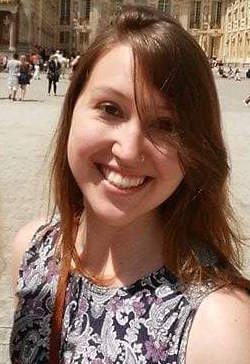For many, ruling in Tamir Rice case highlights need for reform
On Jan. 1, Clevelanders declared that it was a “New Year, No More.”
Over 100 people marched from Impett Park to the home of Cuyahoga County Prosecutor Timothy McGinty to protest the non-indictment of Officer Timothy Loehmann for the shooting of 12-year-old Tamir Rice.
Members of the Black Lives Matter movement, six of the Cleveland 8 (the activists who filed the affidavit that led a judge to find probable cause in the killing of Tamir Rice), students and anyone else who wanted to join gathered in below-freezing weather to protest the ruling.
One woman held a sign reading “Centuries of Injustice,” while others carried a banner with “WE DEMAND ACCOUNTABILITY #YearWithoutTamir” written on it. For four minutes, protestors lay side-by-side on the ground—a die-in representing the four minutes that Rice was unattended by Loehmann and Officer Frank Garmback before receiving medical attention.
McGinty had told the grand jury reviewing the Tamir Rice case that he didn’t believe it was possible to convict Loehmann. This statement came more than a year after the shooting, which occurred on Nov. 22, 2014, and only after the release of enhanced surveillance video. Based on this video, McGinty said it was “indisputable” that Rice was pulling his pellet gun from his waistband when Loehmann shot him. Under these circumstances, Loehmann was potentially taking the reasonable course of action since the police dispatch had failed to inform both him and Garmback that the gun was most likely a fake.
Under the law, Loehmann only needs to prove that he was thinking as any other reasonable officer in his situation would. But reasonable means different things to different people. There were multiple facets of the case to view in the light of reasonability. Was it reasonable to drive the vehicle up to Rice at that particular speed and to stop so close to him? Or would it have been reasonable to try to deescalate the situation from farther away?
“There are a lot of reasonable officers who wouldn’t have come up as close to Tamir Rice as he did,” said Dr. Rhonda Y. Williams, founder and director of the Social Justice Institute.
In reference to the standard of reasonability, Williams said, “Just because something is in the law doesn’t mean it’s just.”
This sense of unjustness is what drove Williams to march at the “New Year, No More” rally, and it is what drove her and others to be involved in protests and reform efforts over the year since the Tamir Rice shooting, and even before then.
“A child being shot is frustrating and saddening,” said Amanda King, a second-year law student at CWRU and a graduate diversity coordinator in the Office of Multicultural Affairs (OMA). “I’m tired of the police looking at young, and even adolescent, African-American men as criminals.”
King went to a public meeting at Cudell Recreation Center, where Tamir Rice was shot, that allowed civilians to speak with the police and public officials about their concerns a week after the shooting. She asked about police training—were police trained to know and identify special cases, such as one involving a child or mental illness?
The answer was no.
Williams and King were both appointed to serve as civilian members of the Cleveland Community Police Commission (CCPC). The CCPC was a result of the consent decree, which came from a Department of Justice investigation that discovered patterns and practice of excessive force within the Cleveland Police Department (CPD) and required that the City of Cleveland reform structural and systemic deficiencies in the CPD. The goal of the CCPC is to propose recommendations that, if approved and implemented, will update the CPD with 21st century policing tactics, such as de-escalation and bias-free policing.
The two women were sworn in to the CCPC on Sept. 8, 2015, along with eight other civilian appointees and three members of different police associations. So far, the police voice on the commission has proven just how hard it may be to change what is, in reality, an entire culture of policing.
“The police officers aren’t letting go of their affinity for the blue,” said King.
“[Change] is going to require police to be reform-minded,” said Williams. “Otherwise these [recommendations] could fall on deaf ears.”
Opportunities for education and involvement in activism related to the killing of Tamir Rice, however, have been occurring on campus since Spring 2015. The SJI organized a read-in of the DOJ report that led to the consent decree, along with many teach-ins regarding the various aspects of this issue—social movements in Cleveland, police brutality, etc.
“[I] encourage students to come to OMA to discuss this case and the surrounding reactions,” said Assistant Director of the OMA Randy Blackford. “It’s an important situation in our country, not only our region, and for students to be aware and involved in something in our own town is an opportunity to be involved in history.”

Anastazia Vanisko is copy editor for The Observer and writes for the news section. She is a third-year political science and dance double major, with minors...

